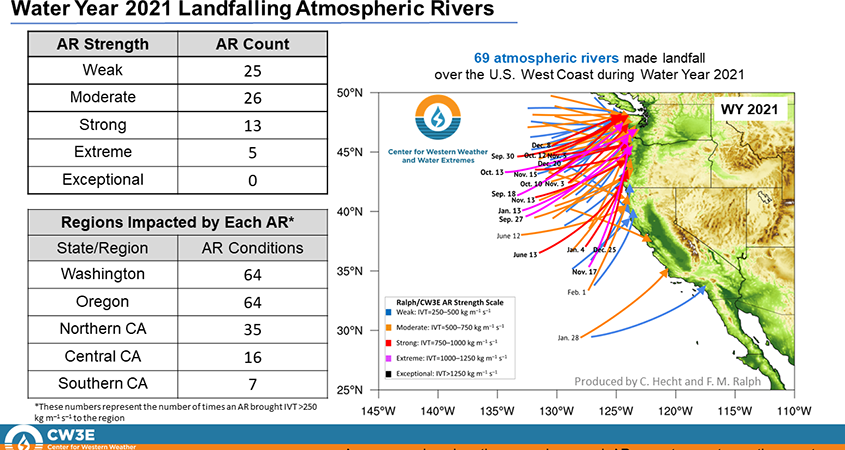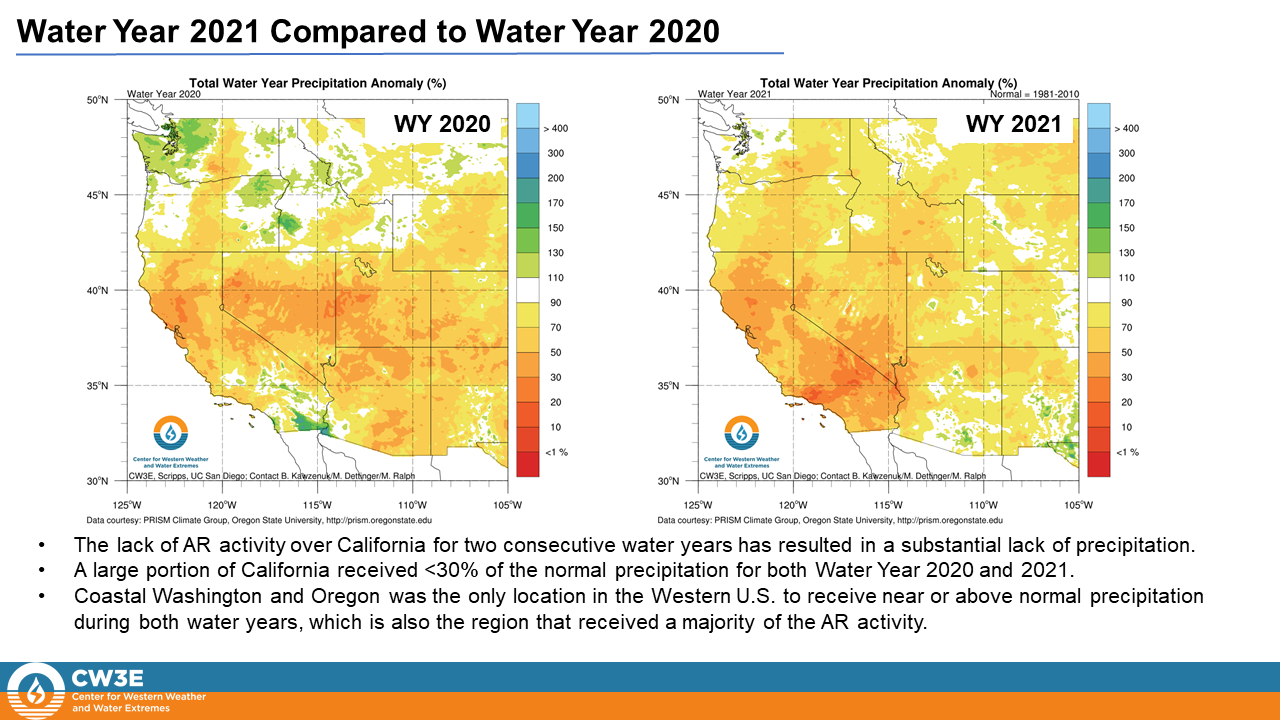This Summer was California’s Driest on Record in More Than 100 years, Here’s What That Means
Yale researchers are charting the course of mighty “rivers” in the sky that are holding steady in the face of climate change — for now.
In future decades, however, climate-induced changes to these atmospheric rivers could drastically increase extreme precipitation events in some parts of the world, they report in a new study published in the journal Nature Climate Change.
Atmospheric rivers — long, winding filaments of intense water vapor — account for as much as 90% of the moisture sent toward the North and South poles.
Lake Tahoe’s water level dropped to a four-year low on Tuesday as gusty winds and the impacts of California’s devastating drought hit the popular tourist destination.
After days of high winds increased evaporation rates, water levels fell to the basin’s natural rim for the first time since 2017, the end of the state’s last drought. The lake normally sits above the rim, which allows for water to flow into the Truckee River. Levels will probably continue to drop, receding below the rim this week, sooner than expected.
The Center for Western Weather and Water Extremes, or CW3E, at Scripps Institution of Oceanography, released its report October 11 on atmospheric rivers during Water Year 2021.
The report, “Distribution of Landfalling Atmospheric Rivers over the U.S. West Coast During Water Year 2021: End of Water Year Summary” shows that more atmospheric rivers landed on the U.S. West Coast in Water Year 2021 than in Water Year 2020. But the majority of those storms reached the Pacific Northwest, not California, where drought conditions have impacted water supply.
“The report on atmospheric rivers shows the variability in weather across the state from year to year,” said Jeff Stephenson, Water Resources Manager with the San Diego County Water Authority. “Through our partnership with CW3E and the AR forecasting tools they’ve developed, it better prepares us in management of our water resources using regional storage. This storage, in conjunction with developing multiple water supply sources in the San Diego region, has prepared us for years when rainfall levels are below normal in the region.”
Water Year 2021 experienced a total of 69 landfalling ARs over the U.S. West Coast, 4 more than Water Year 2020.
• While WY 2021 experienced more ARs, a much larger majority of the ARs only impacted the Pacific Northwest.
• California only experienced AR conditions (IVT >250 kg m–1 s–1) from 36 separate ARs during WY 2021, compared to 43
during WY 2020.

Distribution of Landfalling Atmospheric Rivers over the U.S. West Coast During Water Year 2021: End of Water Year Summary. Graphic: Center for Western Weather and Water Extremes

The lack of AR activity over California for two consecutive water years has resulted in a substantial lack of precipitation.
• A large portion of California received <30% of the normal precipitation for both Water Year 2020 and 2021.
• Coastal Washington and Oregon was the only location in the Western U.S. to receive near or above normal precipitation
during both water years, which is also the region that received a majority of the AR activity.


The San Diego County Water Authority partnered with the Scripps Institution of Oceanography, Center for Western Weather and Water Extremes, at UC San Diego in 2020 to better predict atmospheric rivers and improve water management before, during, and after those seasonal storms. The Center and its partners share best practices in forecast-informed reservoir operations, increased research around atmospheric rivers and droughts, and develop strategies for mitigating flood risk and increasing water supply reliability.
For additional details and graphics go to: https://bit.ly/3mKhkcR
Programs from the drought-busting handbook practiced by Southern California water agencies include recycling water, building storm-water capture basins and offering cash rebates for replacing thirsty lawns with xeriscape landscaping.
With the grip from a second year of drought tightening, a regional water-planning agency in the Inland Empire is moving ahead for the first time in its history with a more controversial program: cloud seeding.
Water use in Manteca increased 3 percent overall or 13.6 million gallons last month compared to the depth of the last drought in September of 2017. That’s good news given the city has added more than 8,000 residents since Jan. 1, 2017 for a 10 percent population gain. The bad news it might not be enough. Despite a light dusting of snow Thursday along the high Sierra crest at the upper reaches of the Stanislaus River watershed critical to urban and agricultural users in South San Joaquin County, hydrologists are indicating a number of weather models don’t look promising.
The current ongoing two-year dry period in California, punctuated by the third-driest water year on record for the Central Sierra, is part of California’s overall arid fate so far in the 21st century, according to the state Department of Water Resources.
The Golden State’s hydrology now increasingly resembles conditions in the Colorado River Basin this century, where multiple, consecutive, drier-than-average years are mixed with an occasional wet year. California’s last wet water year was 2016-2017, the second-wettest on record.
As Gov. Gavin Newsom weighs new mandatory drought restrictions, Southern California leaders fear cuts in urban water use could force already sky-high water bills ever higher.
Unlike much of Northern and Central California, the region isn’t hurting for water, yet. Top water officials insist they have enough supplies for at least one more hot summer, perhaps two.
Green fields of alfalfa and cotton rolled past as Brad Robinson drove through the desert valley where his family has farmed with water from the Colorado River for three generations. Stopping the truck, he stepped onto a dry, brown field where shriveled remnants of alfalfa crunched under his boots.
The water has been temporarily shut off on a portion of Robinson’s land. In exchange, he’s receiving $909 this year for each acre of farmland left dry and unplanted. The water is instead staying in Lake Mead, near Las Vegas, to help slow the unrelenting decline of the largest reservoir in the country.
Helix Water District customers who have had trouble paying their bills during the COVID-19 pandemic will be spared having their water turned off by the La Mesa-based water providers.
The five-member Helix Water District Board of Directors unanimously voted on Wednesday to delay the resumption of shutoffs for nonpayment until Jan. 1, to be consistent with Senate Bill 155, which was signed by Governor Newsom on Sept. 23. Among other things, the new law extends the moratorium on termination of water service for nonpayment until the end of the year.
